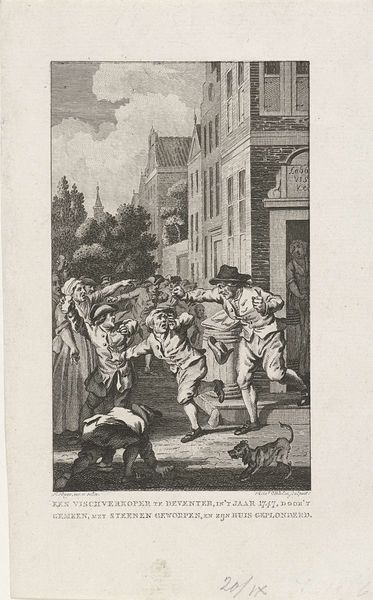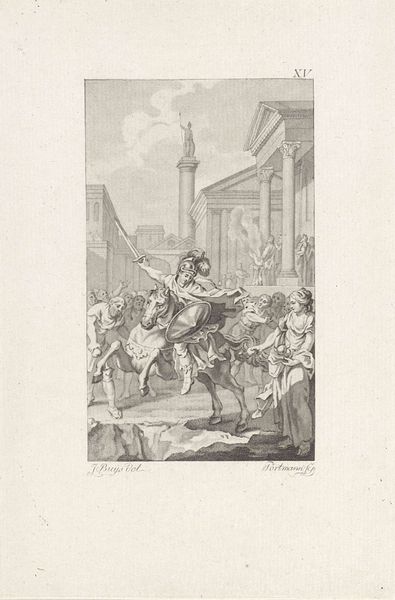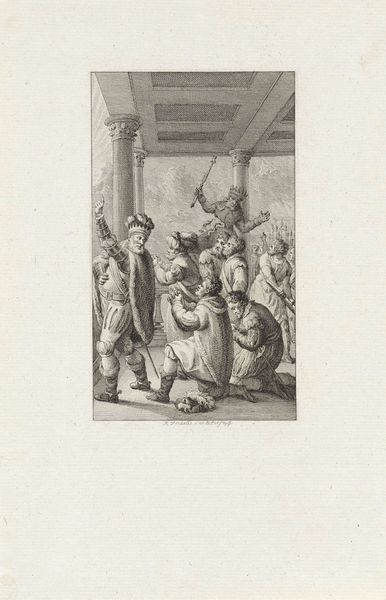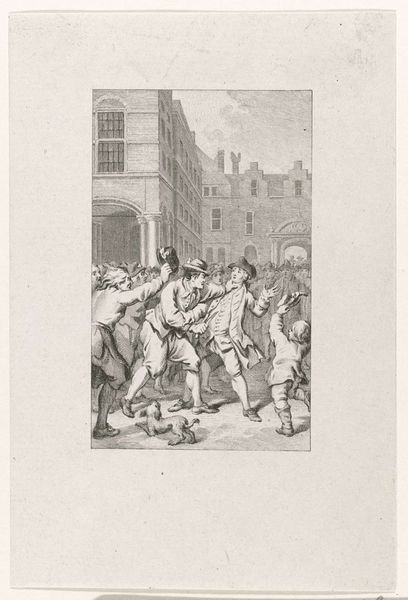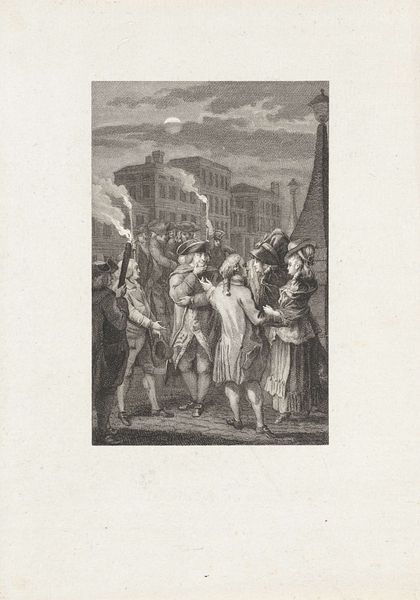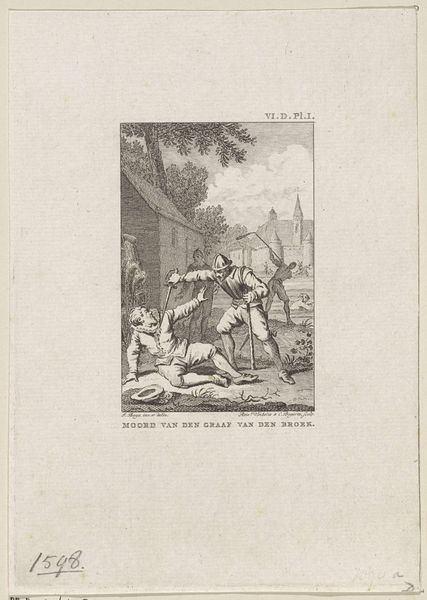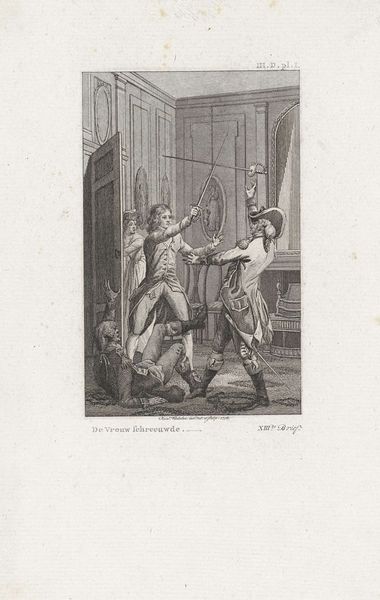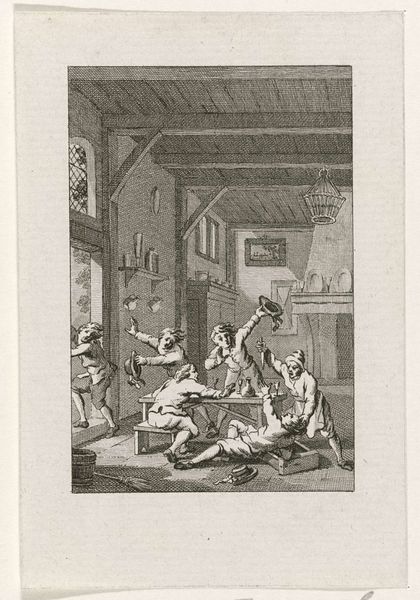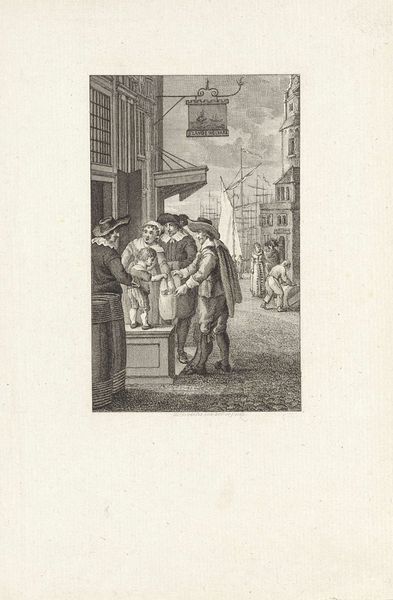
Een vischverkooper te Deventer door 't gemeen met steenen geworpen 1747. pr.dr: v.a.l. 1751 - 1816
0:00
0:00
reiniervinkeles
Rijksmuseum
print, engraving
#
dutch-golden-age
# print
#
cityscape
#
genre-painting
#
history-painting
#
engraving
Dimensions: height mm, width mm
Copyright: Rijks Museum: Open Domain
Editor: This engraving, "A Fishmonger in Deventer pelted with Stones by the Populace in the Year 1747," by Reinier Vinkeles, probably made between 1751 and 1816, is at the Rijksmuseum. It looks like a chaotic scene, but it's also kind of humorous in its exaggerated gestures. What do you make of it? Curator: Look at how the crowd surges forward. Consider how embedded stone-throwing is as a timeless image of popular dissent. What do the stones thrown *mean* to these figures? Think of the emotional weight that everyday materials accrue through symbolic use, like stones, flowers, or even fish. Editor: The fishmonger seems like a scapegoat… Curator: Precisely. Observe how Vinkeles captures not just the act of violence but the feeling of collective rage channeled towards an individual. Remember that prints like these served as visual records and political commentaries, circulating ideas and solidifying shared sentiments. Can you imagine the emotional resonance this image would have held for its contemporary viewers? Editor: So it's not just a historical record, but also…propaganda, in a way? It's visually codifying a shared cultural feeling. Curator: Yes! The artist immortalizes and, in doing so, possibly amplifies this social memory. Even the innocent-looking dog participates. Consider the long cultural shadow cast by the image: What are its lingering effects? How might its visual echoes reverberate even today? Editor: I see what you mean. I thought it was just a funny scene, but now I understand it’s a cultural touchstone loaded with the symbolism of social unrest and group anger. Curator: Exactly. Art provides potent access to past perceptions, and that is very useful.
Comments
No comments
Be the first to comment and join the conversation on the ultimate creative platform.
